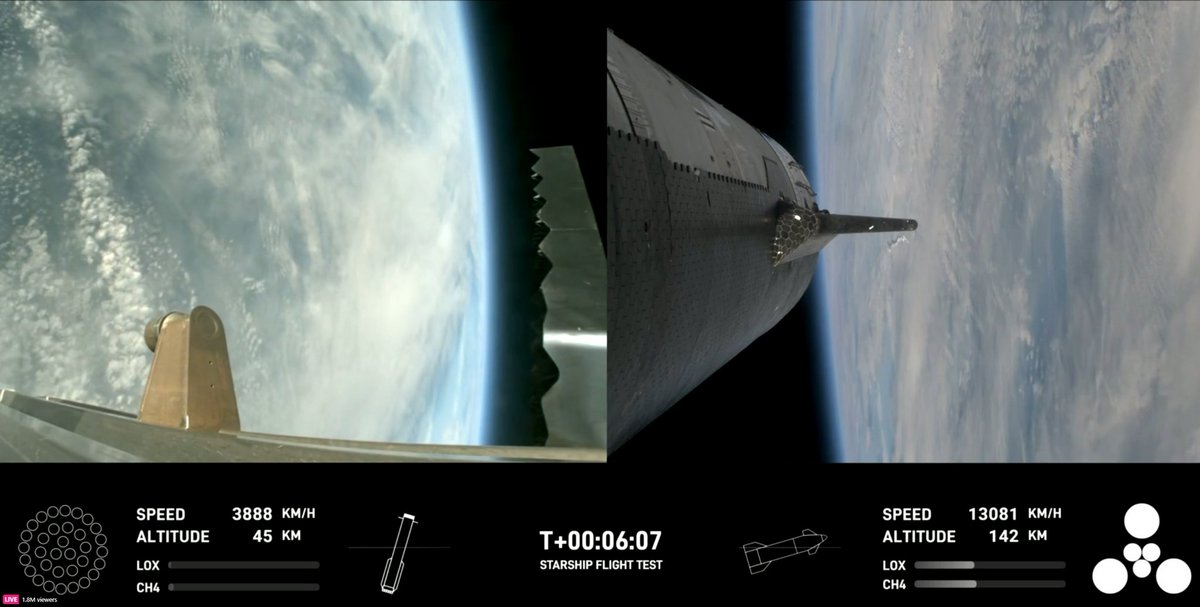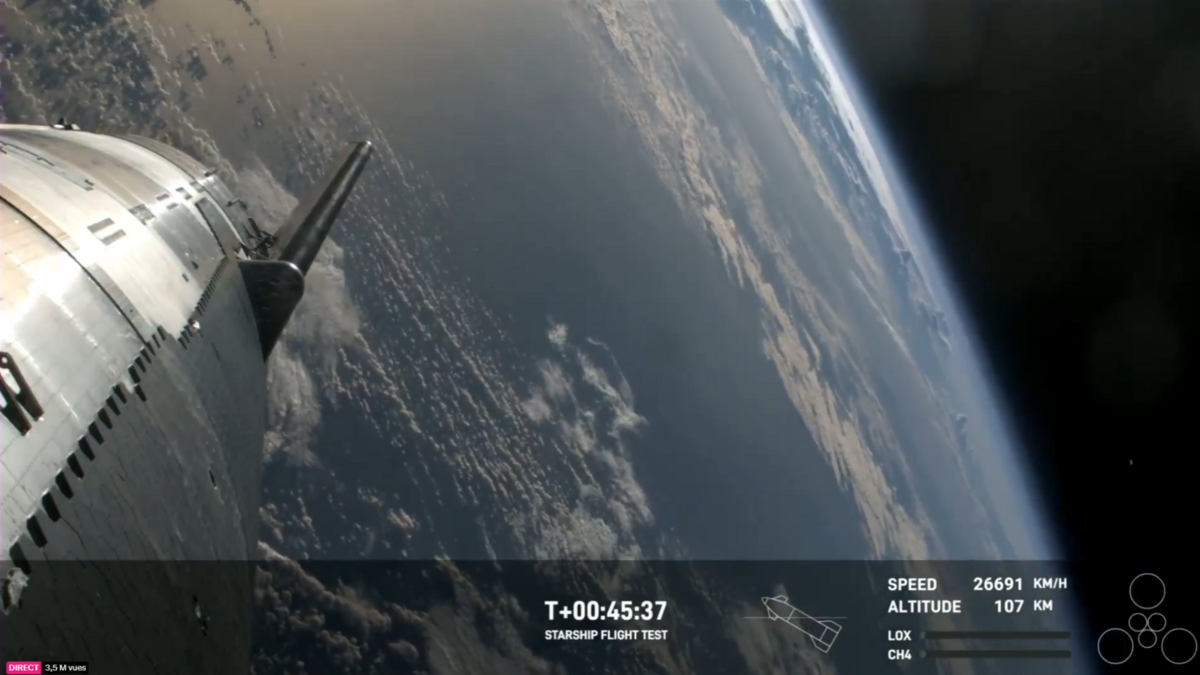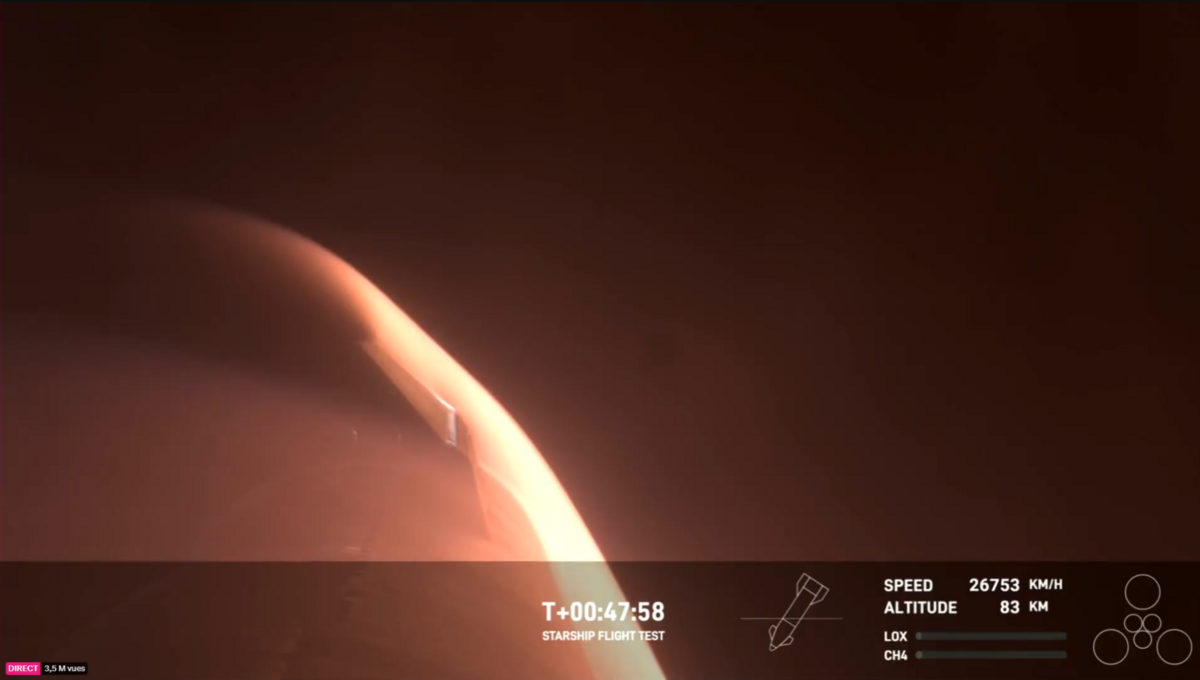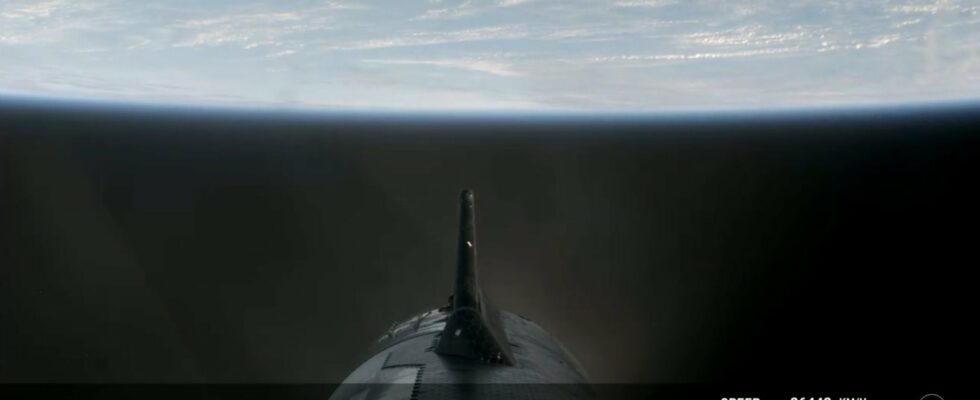With extraordinary onboard images, SpaceX carried out the third takeoff of its gigantic Starship. The most powerful rocket in the world took off at 2:25 p.m. (Paris) and reached space, achieving the majority of its objectives. Despite everything, the return to Earth was more than lively…
Once again, the SpaceX teams did not fail. Less than 24 hours after obtaining the launch permit from the American administration, the titanic SpaceX rocket (5,000 tons at takeoff) launched from its Starbase site, located in Boca Chica, Texas. . The teams, who feared a postponement due to the weather and then had to wait for ships to leave the exclusion zone, nevertheless led a new countdown to the end on the first attempt.
So, less than four months have passed since the second flight test, and again a SuperHeavy booster (B10) has ignited its 33 engines. The beach and the entire region shook, and Starship SN28 launched into the sky, with exterior images and for the first time live on-board, high-definition footage that impressed all observers.
A first phase of flight again impeccable
The lessons of the second flight have in any case been learned. After igniting its engines, none of which failed, the rocket quickly soared above the clouds. At an altitude of 67 kilometers, when it had already reached more than 5,700 km/h, Starship’s six engines ignited, while at the same time 30 of the SuperHeavy booster’s 33 engines shut down, exactly in the planned sequence. Then Starship separated from its first stage to continue its course, while Booster 10 performed its turnaround maneuver to return to the Texas coast. With on-board views, SpaceX has already exceeded the advances made during its previous attempt.
The public was able to follow the race of SuperHeavy which quickly returned towards the sea, crossing the layers of clouds at high speed. Too high speed by the way… Booster 10 failed to stabilize and only managed to restart one of the three motors required to brake in time, so it hit the ocean at high speed. Nevertheless, SpaceX recorded valuable flight data for future tests. Remember that ultimately, SuperHeavy is expected to return to land directly on its launch site, caught by the arms of the launch tower.

Starship passes its tests in quasi-orbit
Starship for its part was hurtling towards orbit, or almost. At t+8 minutes and 35 seconds into flight, the ship shut down its six engines (three vacuum-adapted, three equipped for atmospheric flight), reaching just under 26,500 km/h as planned. And despite comments from SpaceX explaining that it was an orbital flight, it was never discussed. The trajectory, ballistic, took Starship over the Atlantic, then to fly over Africa before reaching the Indian Ocean and diving into it. The SN28 reached an altitude of 235 km, and during the half hour that it spent in a vacuum in weightlessness, the ground teams carried out one of the determining stages of this third test: a transfer test of propellants between two tanks. Commissioned by NASA, the latter is used to validate the models which will one day allow two Starships to mate to have enough fuel to reach the Moon as part of the Artemis project. Was this test successful? NASA spoke about it immediately, but SpaceX in its post-flight press release only mentions the “initialization” of the experiment.
If the flight profile caused Starship not to reach orbit, it was above all a guarantee of safety. SpaceX could have done it, but at 50 meters long and 9 meters in diameter, it is the largest single object to travel beyond the Karman Line: it is necessary, especially in the context of a test like this to know where the latter will cross the atmosphere… Especially since SpaceX ultimately wants to recover and reuse its Starships. An engine ignition in the vacuum of space was planned, but did not take place during this third flight: this is a problem and it is definitely an area to improve in the future. A final test, relating to the opening of the future Starlink satellite ejection bay (humorously named “pez trap”), worked as planned.


A fireworks display to end the adventure
As for the final show, it was of extraordinary visual quality despite the technical problems encountered by the space vehicle. Because not only did Starship not restart its engines, but it seems that it was experiencing problems with its orientation thrusters: when its passage through the atmosphere began, the ship continued to rotate on itself without being able to stabilize . Which is annoying, because only half of its surface is covered with special thermal tiles that allow it to withstand this terrible environment, generating high temperatures and plasmas that we could observe on the live broadcast.
Contact was lost at 65 km altitude, shortly after what finally looked like stabilization thanks to its control surfaces, two ailerons along the engine bay, and two canards at the front. Was it a problem with the tiles (some had obviously been torn off during takeoff), the control, or something else? The fact that Starship simultaneously lost contact through the Starlink network (which provided the images) and the TDRS satellites (which provided telemetry) points to a disintegration of the vehicle around 70 to 60 km altitude, which is the most critical zone for atmospheric reentry.


Considering all the objectives of Starship and SuperHeavy flights, the American administration in charge of flights, the FAA, immediately opened a joint investigation with SpaceX, as was the case for the first two test flights. SpaceX has undoubtedly made progress once again, and the successful milestones on this flight would be a complete achievement for any “conventional” orbital launcher. This leaves the points relating to recovery and reuse, while the orbit now seems within reach. Starship becomes reality.
Source : SpaceNews

29